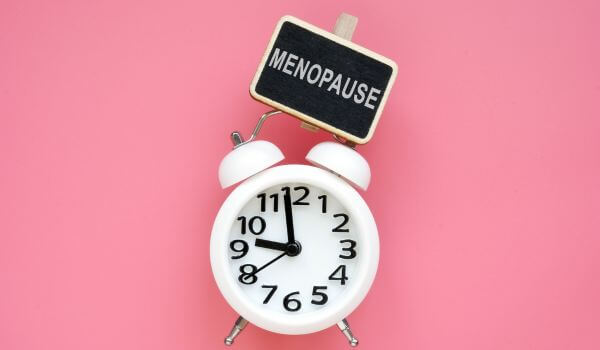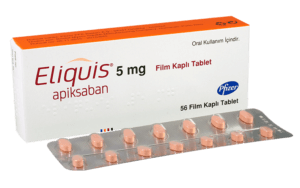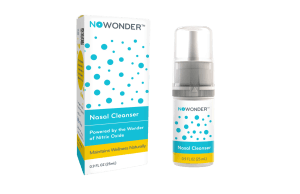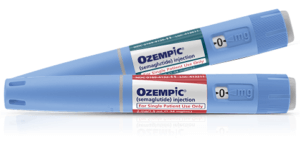“Extreme weather with high winds” no longer automatically means snowy blizzards battering homes and schools and causing massive power blackouts. It can just as easily conjure up images of melting asphalt on the roads and power blackouts caused by surges in demand for electricity for cooling that the power companies can’t meet. This new weather paradigm has profound implications for different sectors, from healthcare to employment, and requires a comprehensive understanding and response. 
Neither the higher echelons of government at the Federal or State levels nor the local authorities have real experience in handling this unexpected development. There are now calls, like this one, for the Federal Administration to declare a national emergency over climate change in the wake of disasters like the devastating fires in Hawaii. Given the need for more consensus on climate change solutions, whether this approach can bring meaningful change makes it difficult to predict any meaningful impact.
Right now, there are two sectors of society where organizations and individuals who have to deal with the consequences of these new extreme weather patterns are starting to raise their concerns – healthcare and large corporations.
What will be the impact of extreme weather on the healthcare sector?
The human body’s sensitivity to temperature has been long understood. Just think about how many times a thermometer was used in your home. An abnormally high body temperature is typically associated with internal infections that could cause permanent damage to vital organs, making temperature control a key focus of medical care.
High temperatures are a double-edged sword. On the one hand, high ambient temperatures can make it difficult for people infected with bugs and viruses to handle their already increased body temperatures. This could result in hospitals and clinics being flooded with patients who need cooling even more than they need treatment for their illness. On the other hand, elevated body temperatures can cause heat stroke, and if that’s caused by external heat – what’s referred to as non-exertional heatstroke – it can even be fatal.
Common health conditions caused by heat
| Illness | Cause | Symptoms |
| Heat rash | Sweat glands get irritated or blocked | Red, bumpy rash that itches; can lead to infections if scratched |
| Heat cramps | Losing too much salt through sweat affects muscle relaxation | Painful muscle spasms, often in the stomach, arms, or legs |
| Heat exhaustion | Dehydration reduces blood flow, affecting the brain and heart | Skin may look red or pale, heavy sweating, fast heartbeat, muscle cramps, weakness, dizziness, headache, nausea, vomiting, fainting |
| Heat stroke | Body temperature gets dangerously high, causing organ damage | Same as heat exhaustion, plus very high body temperature, shock, irregular heartbeat, dry skin (or damp from earlier sweat), confusion, trouble walking, seizures, unconsciousness, and can be fatal |
| Exertional heat stroke | Extreme exercise in hot weather causes body temperature to spike | Same as heat stroke, plus muscle breakdown (rhabdomyolysis) and kidney failure |
Can extreme heat impact brain health?
Healthcare Brew recently reported on a new study of older adults found that repeated, prolonged exposure to extreme heat can result in cognitive decline.
“Researchers from the New York University (NYU) School of Global Public Health and Sungkyunkwan University in South Korea found that extreme heat can “trigger a cascade of events in the brain, including cellular damage, inflammation, and oxidative stress, all of which can exhaust one’s cognitive reserve,” Virginia Chang, an associate professor of social and behavioral sciences at NYU and the study’s senior author, said in a statement.
“Cognitive decline may not manifest right after a single heat event, but repeated or prolonged exposures to extreme heat may be detrimental,” Chang added.
Who is most at risk of illness from heatwaves?
Extreme heat poses serious health risks, particularly to vulnerable groups such as individuals over 75, infants and young children, those who are overweight or obese, pregnant or breastfeeding women, and people with limited mobility. Others at higher risk include individuals experiencing homelessness, those who are socially isolated or living alone, workers in hot environments, and individuals with chronic conditions like diabetes, heart disease, high blood pressure, cancer, or mental illness. Acute illnesses, such as infections with fever can also increase susceptibility.
Recognizing that the dangers aren’t equally spread across the U.S. population is critical. Low-income families are particularly vulnerable, lacking access to air-conditioned housing, private transportation, and affordable healthcare. They are more likely to work in blue-collar jobs and be engaged for long hours outdoors or in uncooled indoor spaces. They are also more likely to lack access to health insurance and affordable health care and to carry higher medical risks because of preexisting conditions such as hypertension or organ diseases.
This means that the whole healthcare sector, from hospitals and clinics, doctors, healthcare insurance companies, and Social Security budgets, will be subject to new sources of strain. There is little room to navigate, and while the upper levels of government may feel that they have room to discuss options before taking any concrete steps, there doesn’t seem to be any way that a significant restructuring of the healthcare system can be delayed.
The effect of extreme weather on chronic conditions
Heat-related illnesses and deaths are often caused by the worsening of existing chronic health conditions. During heatwaves, the most common conditions linked to fatalities include heart problems, respiratory illnesses like asthma, kidney disease, diabetes, nervous system disorders, and cancer. Dehydration during extreme heat can also lead to complications such as medication toxicity, confusion or altered mental states, kidney stones, cardiovascular issues, and an increased risk of falls.
Heat and medication
Certain medications may raise the risk of heat-related illnesses or become less effective when exposed to high temperatures. Medications affected by heat include a variety of types.
Sweating can be disrupted by certain medications and substances. These include anticholinergics, such as tricyclic antidepressants and benztropine, as well as beta blockers, antihistamines, phenothiazines, and vasoconstrictors. Each of these can interfere with the body’s natural ability to regulate temperature through sweating.
Thermoregulation can be disrupted by various substances and medications. Antipsychotics or neuroleptics, such as risperidone, clozapine, and olanzapine, are known to interfere with the body’s ability to regulate temperature. Similarly, serotonin agonists, stimulants like amphetamines and cocaine, as well as thyroxin, can also contribute to challenges in maintaining normal body temperature.
A reduced sense of thirst can occur as a side effect of certain medications. These include butyrophenones, such as haloperidol and droperidol, as well as angiotensin-converting enzyme (ACE) inhibitors.
Dehydration or an imbalance of electrolytes can occur due to various factors. These include the use of diuretics, particularly loop diuretics, and medications that may cause diarrhea or vomiting, such as certain antibiotics, colchicine, or codeine. Alcohol consumption can also contribute to these conditions.
Heat illness can be worsened by a drop in blood pressure, which may be further aggravated by certain medications. These include vasodilators, such as nitrates like GTN, as well as calcium channel blockers and other antihypertensive drugs.
Dehydration can impact the levels of certain drugs in the body, potentially leading to toxicity, especially for medications with a narrow therapeutic index. Examples of such drugs include digoxin, lithium, warfarin, antiepileptics, metformin (a type of biguanide), and statins.
What are the rising costs and medical concerns coming from extreme weather?
The financial implications of this new weather paradigm for the healthcare industry are concerning. The overall expenditure necessary to prevent a significant surge in heat-related illnesses can only be guessed.
A study published by the Center for American Progress in June 2023 highlighted the tangible impact of heat events in Virginia from 2016 to 2020. These figures nationally mean that heat event days are responsible for almost 235,000 emergency department visits and more than 56,000 hospital admissions for heat-related or heat-adjacent illness. This could add approximately $1 billion in hospital costs every summer. And remember that the overall frequency and severity of extreme heat events in the five-year survey was considerably lower than we have seen since then.
How can employers help their people and themselves cope with the new heat?
The changes that have impacted healthcare have parallel effects on corporate life. On one hand, rises in temperatures directly impact worker productivity. Employers have little “wriggle room” to keep worker output at former levels when this could introduce risk of health impacts. On the other hand, employers have legal responsibilities to protect their employees and ensure they work in a safe environment, even in extreme weather conditions. So far, the Federal government has failed to issue a country-wide standard that reinforces heat safety, but that can’t be too far off. The Occupational Safety and Health Administration (OSHA) has already launched a three-year National Emphasis Program (NEP) focused on high-hazard industries like construction workers reinforcing requirements like “Water. Rest. Shade”.
Industry Responses
The response from industry bodies and leaders has been varied and innovative, from shifting work schedules to cooler hours to fitting employees with wearable tech devices that constantly monitor body temperatures and warn shift supervisors when employees exceed their heat threshold. More directly, changes are being made in-house to ensure a safe working environment. Installing solar panels on roofs to absorb heat and providing portable shading when work has to be conducted outdoors are just two such moves that many employers are now taking.
These measures reflect a growing acknowledgment of the multifaceted impact of extreme heat on the workforce.
How can I stay well during hot weather?
Taking steps to maintain health and comfort during hot weather is important for overall well-being.
Drink plenty of water
Preventing heat-related illnesses starts with staying hydrated. It is important to drink water regularly, even without feeling thirsty. Carrying a water bottle when spending time outdoors can help ensure enough fluids are consumed to avoid dehydration.
Keep cool
Staying cool is an important way to prevent heat-related illnesses. This can be achieved by avoiding direct sunlight and wearing light-colored, loose-fitting clothing. Taking cool showers or baths can also help, along with applying sunscreen and wearing a hat when going outside is necessary. It is recommended to plan activities around the hottest parts of the day, typically between 11 a.m. and 3 p.m., and limit physical activity during extreme heat. Additionally, keeping indoor environments as cool as possible can further reduce the risk of heat-related issues.
To maintain a cool environment at home or work, it is helpful to use fans or air conditioning when available, keep curtains and blinds closed during the day, spend time in the coolest room of the building, and minimize the use of stoves and ovens.
For those living in a house that is too warm or without air conditioning, it can be helpful to spend time in cooler locations. Places like libraries, shopping centers, cinemas, or swimming pools provide a comfortable escape from the heat and can help regulate body temperature during hot weather.
Take care of others
During hot weather, look out for the well-being of loved ones, especially older relatives, neighbors, or friends. Checking in on them through a daily visit or call can ensure they are staying safe and hydrated. Providing access to cool drinking water, encouraging hydration, and helping them reach air-conditioned spaces if necessary can make a significant difference. Precautions should also be taken to protect babies, children, and animals from the heat. Infants, children, and pets should never be left alone in a car, even with the air conditioning on. Animals kept outdoors should have access to water and shaded areas, while children should be reminded to drink water regularly.
Plan ahead
Planning ahead for extreme weather is important, especially for those who may be more vulnerable to heat-related illnesses. Checking the weather forecast regularly can help individuals prepare for high temperatures. People with existing health conditions should consult their doctor to understand if they are at a higher risk and to receive specific advice on managing their condition during extreme heat.
Keep food safe
During hot weather, it is important to follow proper food safety practices to prevent spoilage. Perishable foods should be kept at the correct temperature by storing them in a refrigerator to ensure they remain safe to eat.
FAQs
How can I stay safe in the sun?
Protecting the skin from sun exposure is essential. Taking steps to prevent sunburn can significantly lower the risk of developing skin cancer later in life. It is helpful to stay informed about the UV index. When the UV index reaches 3 or higher, a UV Alert is issued, signaling the need for sun protection.
How does extreme weather conditions affect mental health?
High temperatures can cause your body to release stress hormones like adrenaline and cortisol. This can make you feel more irritated or agitated as your body reacts to the heat.
What is heatstroke?
Heat stroke is a serious condition that happens when your body temperature goes over 104°F. It can be life-threatening if not treated quickly. Heat stroke is caused by being in hot weather for too long or doing physical activity in the heat without drinking enough water. Signs of heat stroke include feeling dizzy, confused, having a fast heartbeat, or trouble breathing. If it’s not treated, it can damage your organs or even cause death. If you or someone else shows these symptoms, get medical help right away.
How to stay safe in a extreme weather?
Limit outdoor activities when it’s really hot, especially if they involve a lot of physical effort. Fans can help, but they’re not always enough to stay cool. It’s a good idea to visit places like cooling centers, libraries, or community centers to spend time in air-conditioned spaces during the hottest parts of the day. Most importantly, drink plenty of water to stay hydrated!
Is there a difference between sunstroke and heat stroke?
Heatstroke happens when the body can’t cool itself down, causing the body temperature to rise to dangerous levels. It doesn’t always require being in the sun; it can happen in a hot, stuffy room with no airflow. Sunstroke, on the other hand, is a type of heatstroke caused specifically by spending too much time in direct sunlight.













